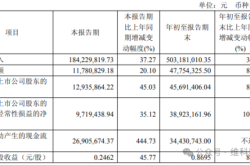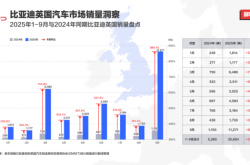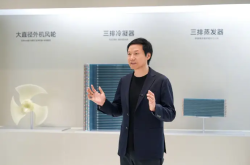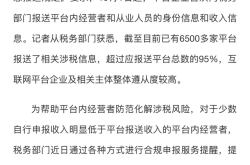AI Era: Mobile Phone Manufacturers Are Undergoing a Radical Transformation!
![]() 03/16 2025
03/16 2025
![]() 526
526
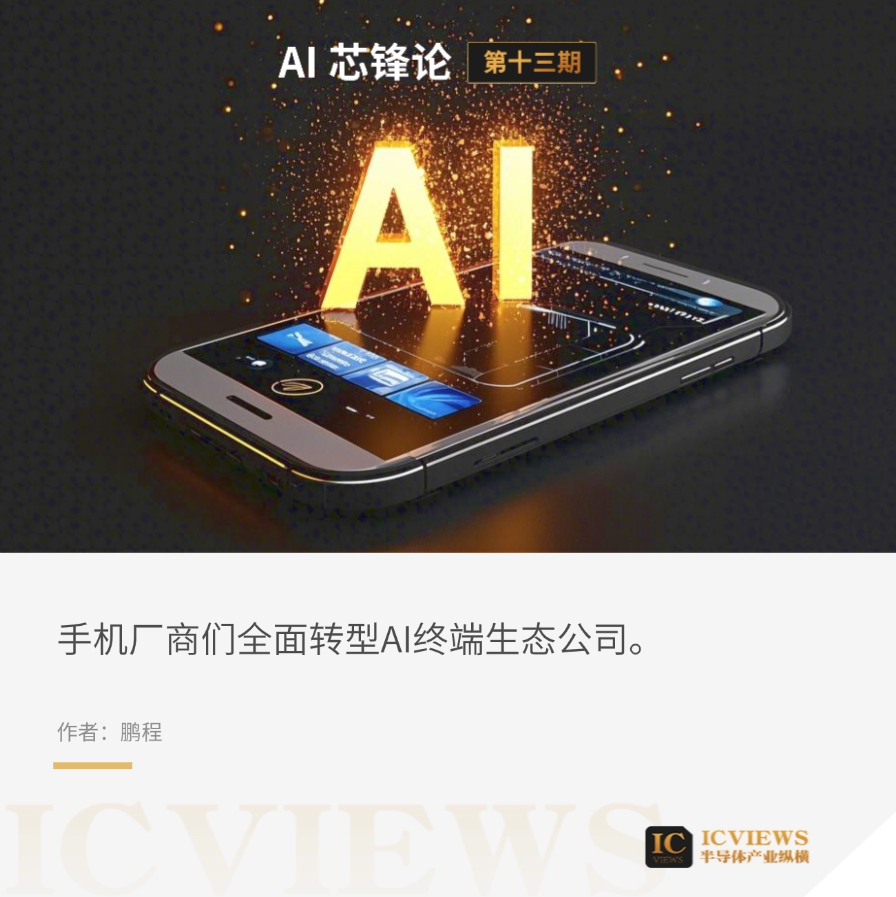
In today's AI era, the boundaries of smart terminal capabilities are continually being pushed. These devices are evolving from isolated functional units into interconnected and collaborative service nodes. This shift is not only driven by the internal logic of technological evolution but is also closely tied to the pressing need for reconstructing industry ecosystems.
Since the beginning of the year, the rise of DeepSeek has garnered significant attention in the global market. It has not only created a buzz in the tech industry but has also sparked heated discussions among everyday users. Leveraging its dual benefits of low cost and high performance, DeepSeek has connected various devices—from mobile phones and PCs to TVs, cars, and even kitchen appliances—accelerating brands' market penetration and terminal deployment. The "butterfly effect" triggered by DeepSeek has sparked an AI popularization wave, spanning from R&D to market ends.
As a breakthrough AI application, DeepSeek has not only swiftly amassed a vast user base but has also propelled the intelligent upgrade of terminal devices through its open-source nature and efficient computational power optimization. This, in turn, has breathed new life into future terminal technology innovation and market growth.
01
Mobile Phone Manufacturers Transition into AI Terminal Ecosystem Companies
Against this backdrop, mobile phone manufacturers are actively seeking and exploring their transformation into AI terminal ecosystem companies. Leading manufacturers are racing to unveil their AI strategic layouts.
Recently, Li Jian, CEO of Honor, made his debut at MWC 2025 and officially announced the Honor Alpha strategy. He revealed that Honor aims to transform from a smartphone manufacturer into a globally leading AI terminal ecosystem company. The strategy's implementation is divided into three phases: Firstly, creating a truly intelligent phone in the era of AI agents, collaborating with partners to push technological boundaries and co-create a new AI terminal paradigm; secondly, expanding industry boundaries in the era of physical AI to co-develop a new AI ecosystem paradigm; and thirdly, transcending human potential in the era of general AI to co-establish a new human civilization paradigm. Over the next five years, Honor will invest $10 billion to break through multiple boundaries with global partners, fostering a diversified AI open terminal ecosystem.
ZTE also adheres to the core product strategy of "AI for All," consistently deploying a comprehensive range of multi-form AI terminal products. Using AI mobile phones as the key entry point, ZTE strives to create a novel multi-modal interactive experience based on AI voice. The self-developed Nebula AI OS framework achieves system-level integration of world-leading AI capabilities, deeply integrating advanced large models such as Google Gemini, ByteDance Doudou, DeepSeek, China Mobile Jiutian, Telecom Xingchen, and practicing the concept of AI inclusivity, enabling more consumers to enjoy the efficiency, emotion, and functional value brought by AI. ZTE not only pioneered the embedding of the full-size DeepSeek-R1 (a full-fledged version with 671B parameters) in the flagship nubia Z70 Ultra but also plans to integrate this industry-leading large model across its entire product line.
Xiaomi is not to be outdone. During the launch event for the 15 Ultra and Xiaomi SU7 Ultra, Lei Jun not only introduced two eye-catching new products but also showcased Xiaomi's development blueprint for the next five years—$105 billion in R&D investment and ambitious goals in the AI sector. Of the $30 billion R&D investment in 2025, AI and related businesses account for a quarter. This translates to Xiaomi investing $7.5 billion in AI technology R&D. Lei Jun also announced at the private enterprise symposium that the company will vigorously promote the implementation of AI technology, marking not only Xiaomi's new strategic direction but also its firm commitment to future development. Lei Jun emphasized that AI technology will be deeply integrated into Xiaomi's various terminal products, offering consumers a more intelligent and convenient user experience.
Huawei is also making strides in the AI domain. In collaboration with Tsinghua University, they jointly released the "AI Terminal White Paper" and announced at Huawei Developer Conference 2024 that the highly anticipated HarmonyOS NEXT has commenced beta testing for developers and pioneering users. As an AI-centric native intelligent OS, HarmonyOS NEXT comprises four core elements: a unified AI system foundation, native intelligent applications, system-level intelligent agents, and an open ecosystem. Huawei is promoting the full integration of AI large model technology into terminal systems, reconstructing HarmonyOS's native intelligence centered around AI. They have upgraded XiaoYi to XiaoYi Intelligent Agent, enabling more natural multi-modal interaction, comprehensive full-scene fusion perception, open ecological collaboration, and reliable privacy and security protection. Through end-cloud collaboration, Huawei has built a genuinely powerful and unified full-scene intelligence, offering consumers an unprecedented smart experience.
02
AI Strategy Extends to PCs, Tablets, and Wearable Devices
In the past, mobile phone manufacturers did not prioritize "side businesses" like PCs, tablets, and wearable devices. On one hand, these categories struggled to generate substantial revenue; on the other hand, they were not the "forte" of mobile phone manufacturers. In essence, they neither generated significant profits nor competed effectively with niche market leaders. However, fueled by AI technology, these areas are becoming new battlegrounds for mobile phone manufacturers.
In the PC sector, Lenovo released over a dozen AI PCs last year, lowering the price point to $800. At the Cloud Town Conference, Lenovo also introduced the "full-stack AI" solution, encompassing AI PCs. Honor has also launched multiple AIPC products and plans to comprehensively restructure Honor notebooks with AI, creating smart hardware driven by AI cores, human-computer interaction empowered by AI agents, and a cross-terminal ecosystem with AI service flow, leading the evolution of AI PCs in the industry. Xiaomi recently announced its intention to release AIPC products. Earlier, Ma Zhiyu, Xiaomi's director of product marketing, had already unveiled the packaging box of a new REDMI notebook product, the REDMI Book Pro 2025, equipped with an Intel Core Ultra 5 processor.
In the tablet sector, as early as last August at the HarmonyOS Enjoy World S9 and Huawei Full Scenario New Product Launch Event, Huawei's MatePad Air was equipped with a self-developed AI large model.
In the wearable device arena, Nubia released the first AI smart headset, nubia LiveFlip, which is deeply interconnected with Nubia AI mobile phones through the Nebula AI OS, further enhancing the AI full-scene interactive experience.
The proactive layout of mobile phone manufacturers in the AI sector has also compelled traditional equipment manufacturers to accelerate their transformation. Vendors such as HP and Dell are eager to acquire AI algorithms or collaborate with AI algorithm companies to swiftly launch intelligent terminal products for vertical scenarios, thereby securing a foothold in this fiercely competitive market.
03
"AI+Multi-Terminal" Becomes the Key to Breaking the Situation
Behind manufacturers' collective shift lies the growth dilemma of the mobile phone market. According to Counterpoint's monthly mobile phone sales report, smartphone sales in China declined by 3.2% year-on-year in the fourth quarter of 2024, making it the only quarter of the year to experience a year-on-year drop. The consumer replacement cycle has stretched to nearly four years, and the entire industry has entered a challenging "zero-sum game" phase.
However, the emergence of generative AI has opened a new window for mobile phone manufacturers. Especially with the advent of DeepSeek, relying on its open-source nature and core technology that drastically reduces AI model reasoning costs, the "AI+Multi-Terminal" strategy of mobile phone manufacturers has been significantly empowered. Although the concept of AI mobile phones has gained popularity over the past one or two years, and almost all mainstream mobile phone manufacturers have launched their own AI mobile phone products, due to issues such as device size and energy consumption, AI-empowered PCs and tablets can clearly offer better experiences to consumers and better unleash the potential of AI technology.
The deeper impetus behind mobile phone manufacturers' "AI+Multi-Terminal" strategy lies in the evolution of the business model. Traditional hardware manufacturers rely on one-time sales for profit, whereas AI-driven terminals can generate continuous revenue through software services. This "hardware + service" profit structure is profoundly transforming the business logic of the consumer electronics industry. Of course, for this business model to form a positive cycle, manufacturers must possess the capability to reconstruct user experiences with AI.
IDC predicts that global tablet shipments in 2025 will remain largely unchanged from 2024, at 140 million units. Among them, shipments of the next generation of AI tablets are expected to increase by over 300% year-on-year. Various manufacturers will inevitably enhance the AI capabilities of their tablet devices, boosting chip computing power while also expanding AI applications, which will accelerate the transformation of tablets from leisure and entertainment devices into professional productivity tools.
Simultaneously, tablet interaction methods will accelerate towards multi-modality. Optimize the adaptability of traditional keyboards and stylus accessories while expanding the application of emerging interaction methods such as vision and sensing, enhancing the convenience, professionalism, and security of tablet use.
Focusing on the Chinese market, stimulated by the "national subsidy" policy, IDC has revised upwards its forecast for tablet shipments in the Chinese market in 2025, expecting shipments to reach 31.48 million units, an increase of 5.4% year-on-year.
04
China Has the Potential to Lead the New AI Terminal Paradigm
Artificial intelligence is a strategic force driving a new round of technological revolution and industrial transformation. AI terminals, as important carriers of the new generation of artificial intelligence, are rapidly expanding from smartphones, smart cars, and wearable devices to smart homes, robots, and other diverse fields. China's industrial advantages in smart terminals and consumer electronics present an opportunity for the country to become a leader in this new paradigm.
In terms of industrial foundation, China has established a comprehensive industrial chain in smart terminals such as smartphones and wearable devices, as well as in the consumer electronics sector, boasting strong manufacturing capabilities and industrial clusters. Cities like Shenzhen are crucial global manufacturing hubs for the electronics industry, capable of swiftly integrating AI technology into various terminal products and achieving large-scale production and market promotion.
In terms of application scenarios, China's vast population base and diverse market demands provide abundant application scenarios for AI terminals, encompassing intelligent transportation, smart homes, fintech, healthcare, and more. These diverse scenarios can offer abundant data support and practical opportunities for the technological iteration and innovation of AI terminals.
In terms of technological innovation, domestic enterprises actively participate in international open-source communities and collaboration projects, accelerating the dissemination and application of AI technology through open-source sharing and cooperative innovation. This enhances China's technological prowess and international influence in the AI terminal sector, exemplified by DeepSeek promoting the development of large models in China through open source.
Additionally, the Chinese government places significant importance on the development of the AI industry. In 2024, the "AI+" initiative appeared in the government work report for the first time. The report highlighted the need to deepen the R&D and application of big data and artificial intelligence, implement the "AI+" action, and build a digital industrial cluster with international competitiveness. This year's government work report also mentioned the continued promotion of the "AI+" initiative, better integrating digital technology with manufacturing and market advantages, supporting the widespread application of large models, and vigorously developing new-generation intelligent terminals such as intelligent connected and new energy vehicles, AI smartphones and computers, and intelligent robots, as well as smart manufacturing equipment.
During this year's Two Sessions, Lei Jun put forth three suggestions. Firstly, to improve the standard system for AI terminals, compile a series of intelligence classification standards oriented towards user experience, study and formulate identification methods for AI terminal products, and strengthen the effective connection between international and domestic standards. Strive to initially establish an AI terminal standard system by 2027 and take the lead in forming a globally leading AI terminal standard system by 2030. Actively promote the selection of outstanding products and typical cases to aid enterprises in innovation and development.
Secondly, we must fortify industrial collaboration in AI terminals and cultivate an application-centric collaborative ecosystem. Under the guidance of industry organizations, terminal manufacturers, application developers, and large model producers should collectively expedite the development of standardized interface protocols and data formats for seamless integration between terminal devices and intelligent applications. By 2030, our goal is to establish two to three globally recognized and leading intelligent terminal operating system platforms, facilitating the cross-border and seamless interconnection of hundreds of millions of terminal applications, thereby constructing an open and mutually beneficial innovation ecosystem for AI terminals.
Thirdly, central and local governments must enhance their support for R&D and application projects within the realm of AI terminals. Our aspiration is to foster a world-class, competitive intelligent terminal industrial ecosystem by the year 2030.

